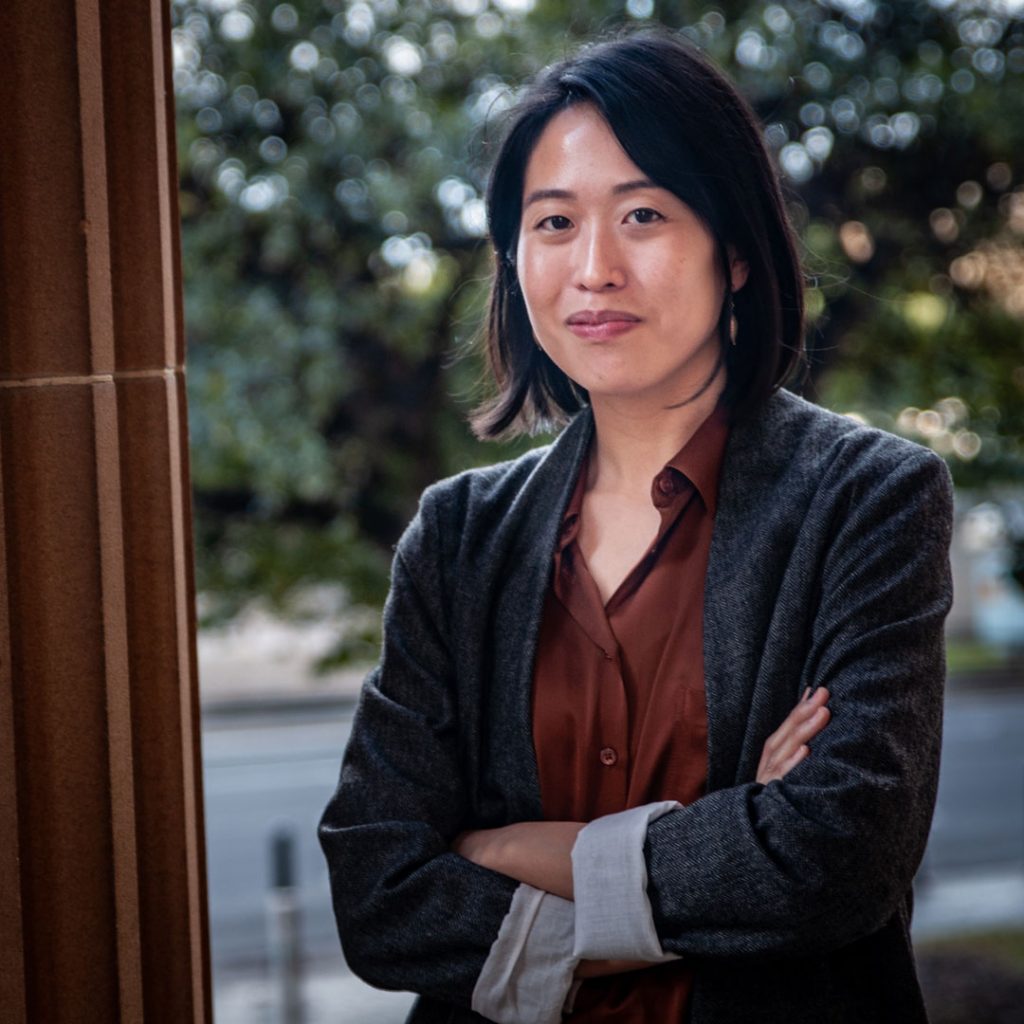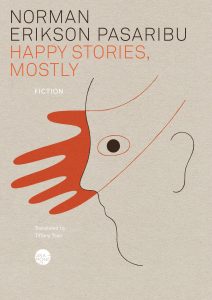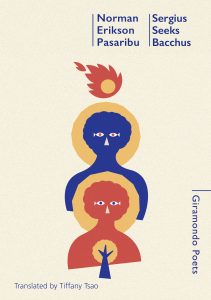A mostly happy chat about Happy Stories, Mostly
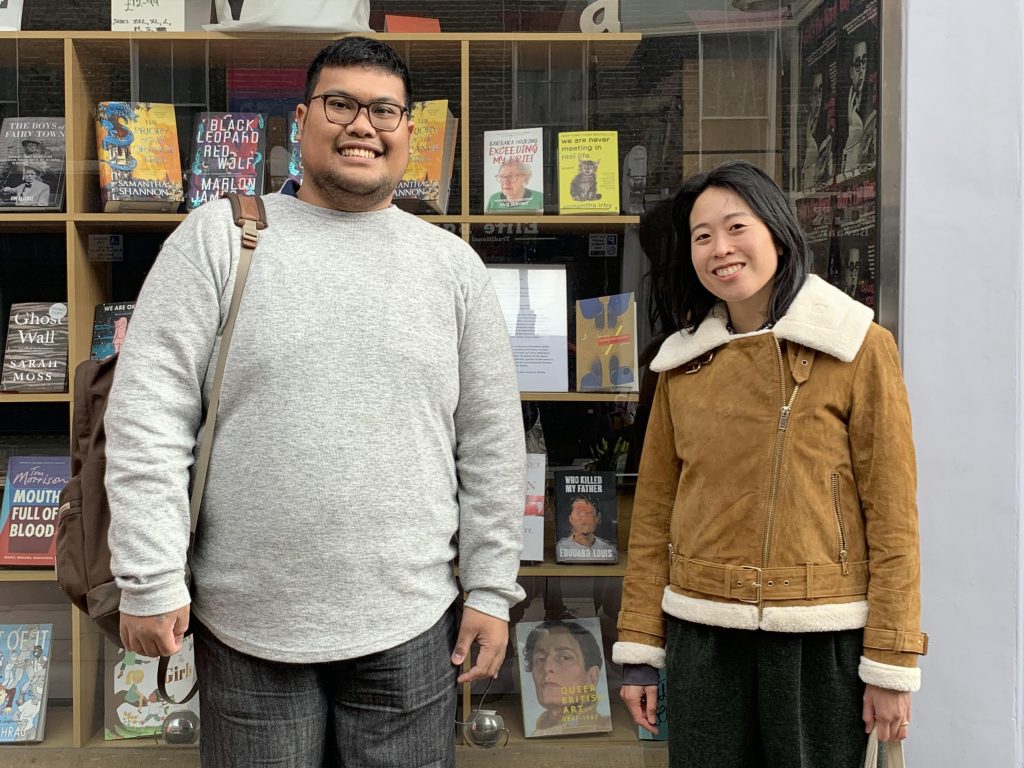
Norman Erikson Pasaribu: I wrote these stories in Indonesian mostly listening to music. Do you do your translation in a similar way?
Tiffany Tsao: I did the opposite and worked in a sound vacuum! Your stories have such rhythm, and whenever I tried to listen to music, it interfered too much, so I ended up not listening to any at all. Just repeating the words of your original to myself, then internalising the sound to make an English dubbing. What music did you listen to, Normie? A particular song for each story? I know you wrote some of these pieces a long time ago, so I don’t know if you remember. But then again, sound memories can be so strong.
NEP: Wow, I wonder now how it feels to write or translate with no other sounds except your mind. Music helps me to concentrate less on other things around me. I get distracted easily, as you already know, and music helps me focus on the mood of the story. I listened a lot to Joni Mitchell in writing the stories in this book. Also Batak pop songs from YouTube. Joni’s ‘Little Green’ is honestly the soundtrack for ‘So What’s Your Name , Sandra?’.
TT: Do you select the song for the story, or does the story select the song? Do you go through multiple songs before you find ‘the one’?
NEP: I select the first one randomly, and then let the shuffle decide. Did you translate each of the stories in one go? How do you partition your workload for the day, and balance it with your personal writing and other works?
TT: I always complete one story fully before moving on to the next. Each of your stories, even though there are running motifs and connections, are such creatures in and of themselves, deserving complete attention. And also, I am so bad at multitasking: I can’t work on a new thing properly if I haven’t finished what I am currently working on. I haven’t written very much of my own stuff during this pandemic. Life is so chaotic recently. No balance. But it made me really happy to have these stories to hang on to – a gently bobbing life raft. I could wake up on working days and look forward to translating the stories.
NEP: Good portions of these stories are about Batak people who live in Bekasi. We had that amazing Bekasi trip back in 2019. Did it ever help you in translating these stories, and do you still think of the pempek we had for lunch?
TT: It was really cool, Normie, to be able to experience your ‘hood with you. Translating brought back nice memories of visiting you. I think it helped make the people and places you write about more tangible, more vivid. And gosh, that pempek haunts my dreams. Pempek is one of the childhood foods I miss so, so much. We’ve talked about music, but what role does food play in your writing?
NEP: Food plays a big role in my fictional universe, Tiffy. It’s almost as if food helps create the memories that my characters hold most dear. In real life, I cook for people I love, as everyone does. I want them to remember me when I am in the best frame, which is when I eat. In my writing process, I sometimes use food to understand more the relationship between the characters in the book. I mean, meal time is probably the most integral part of a human life. An example: Sandra and her boy Bison – their relationship is defined by the street cotton candy she bought when she walked home after working the morning shift. The cotton candy is not just a metaphor for a mother’s love, but also a deep love from a single parent who works to support herself and her child, despite everything.
TT: This is true. Now I am also recalling how Tula takes Sebastian out for ice cream and makes him food. And when Meta, the girlfriend of the awful narrator in ‘The True Story of the Story of the Giant,’ sends nasi bungkus meals to the shattered narrator to support him through his grief. Food is such an immediate and physically nourishing way of showing we care. (Ironically I am answering this question while making lunch for my six-year-old who just finished school on Zoom.) But I also think of the scene in the airport in ‘The True Story’ where the narrator is flying back after his friend’s funeral, and he becomes obsessed with the taste of the McDonald’s cheeseburger he’s eating. Is it significant, his attitude toward food at this point?
NEP: It is. Food can be such a comfort, but it also might prevent us from dealing with our own grief. The narrator didn’t realise that he couldn’t process his loss of his close friend (and perhaps also the platonic love he unconsciously had for him) because he never processed his loss of his father. He was so untrained in grief-processing he ended up forcing himself to overanalyse the taste of junk food. I mean, all of those brimming emotions need to go somewhere.
TT: True. I definitely know KFC is a comfort food for me – and for the main character in ‘So What’s Your Name, Sandra?’ too it seems. She takes a trip to an unfamiliar place to recover from her grief and ends up eating a lot at the KFC.
NEP: Indonesians that I know have this strange ritual of cutting hair to cut off a streak of bad luck. Or to go to the beach and walk on the shallow salt water to drive off bad luck or bad spirit. I think somehow it is because we think the ocean is pure, even though in reality, in Jakarta, it was so dirty, all thanks to industrialisation and the way we live. In a way, Sandra went to Vietnam in that mentality. She wanted a place she never visited to heal her. A little story about KFC: I lived in Hanoi in 2017 with so much trauma on my bag. I loved Vietnamese food, but, at times, when my head was so rough, I kept finding myself ordering at a nearby KFC. Somehow, I feel now, I was so depressed that I just wanted something so familiar. KFC chicken defined my college times, as we students saw it as a luxury and we ate it once a week together. But we had such a good time. I imagined Mama Sandra felt the same.
TT: There are so many ways in which the emotions in the stories overflow, spill over (to use imagery from the stories) and take forms different from the original feeling. How it morphs not just into hunger, but anger for some characters. Or channelled (with irony) into ‘bouncing back and improving oneself’ in ‘A Young Poet’s Guide…’ Or just wanting to do something in the case of the retired nun of ‘Ad maiorem…’ Or snooping (‘Our Descendants…’) or stalking (‘Deep Brown, Verging on Black’). One of the lines I found most striking during the translation process was the one from ‘A Bedtime Story for Your Long Sleep’ – of ‘a bottomless pit of sorrow-bricks’ to build a ‘Babel Tower of misery’. I felt as if it captured how I’ve ended up approaching translating this collection. To be honest, I have felt so much sorrow during this translating time, for various reasons. And I felt somehow that, well, maybe there is hope if these bricks of sorrow can at least be used to create something – a tower that will lead out of the pit. I think it also held a mirror up to how I approach both my translation and writing work. I think there’s something almost superstitious about it, but I think I believe that the more of my heart I wring into it, the sweeter the resulting ‘juice’ will be. And it really felt like this when translating this collection. I don’t want to sound depressing or gloomy. I think it was more like…the transmutation of intense sorrow into melancholic joy?
Actually, I feel the original title of the collection captures this happiness-sorrow combo: ‘Cerita-cerita Bahagia, Hampir Seluruhnya’ could also be translated as ‘Happy Stories, Almost All of Them’. Could you tell us more about the ‘Hampir’ – the Almost? So many of the stories are about the heartbreak of ‘almost’ – either deep longings denied, or hopes crushed, or false notions shattered, or coming so close to happiness or actually experiencing it, only to have it ripped away.
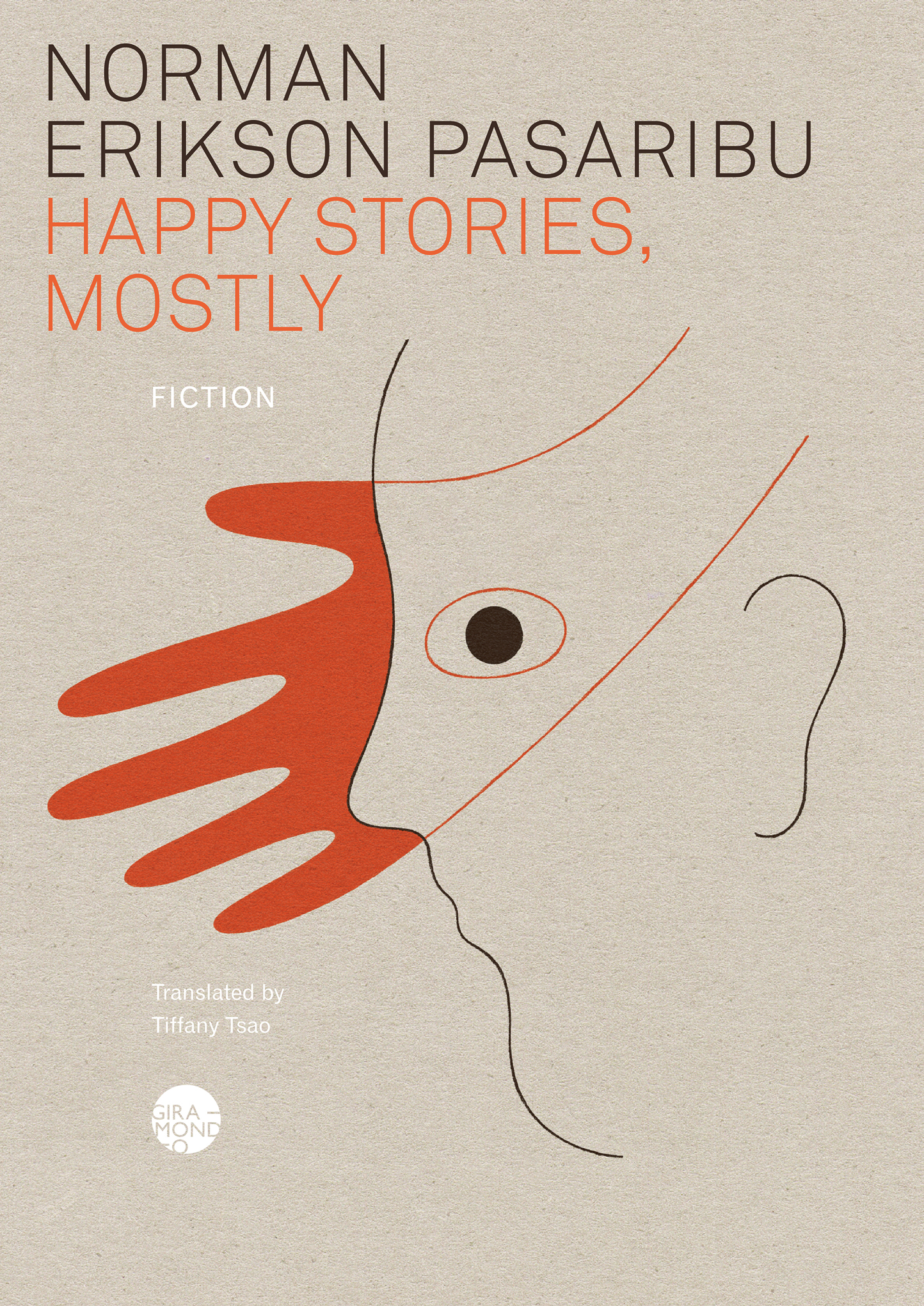
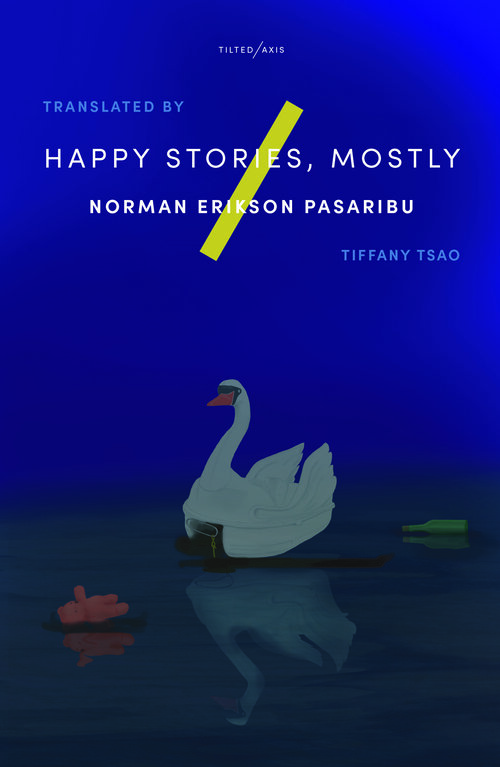
NEP: One of the stories in the book was written based on the tale of Count Dracula. I grew up with countless Chinese vampire movies, and these B-movies have helped shape who I am as a storyteller. I also loved watching Coppola’s Dracula when I was a kid. And, to be honest, it was even more haunting to watch it on TV at midnight when your parents slept in the next room – their room didn’t have a door at that time. What if they woke up and caught you not sleeping, and instead watching the movie’s more erotic scenes?
The idea of using the word bahagia (happy) as a title of the book comes from a Goodreads reviewer who advised me to change the title of my first collection to ‘Stories of People in Suffering,’ a review that I found very funny. I mean, hetero readers hate sad-all-the-time fictional gays, but give zero effort to make us, who are gay in the flesh, happy. It’s a sad irony.
I decided to use the word ‘hampir’ because it is just a letter away from the word ‘vampir.’ Being happy, being contented, being positive, being productive, being on-top-of-the-world, being fearless, being be-yourself, and being unapologetic are often demanded of us by the so-called progressive heteros. Snap out of it, you poor gays, they might say. As sad it may sound: for them, happy gays are a sign of social progress. But, let’s be real: can you, as a queer, be happy in the way the heteros are happy in Indonesia? Happiness requires an endless list of privileges, in any part of the world. I mean, it is often the heteros that block us from accessing happiness. So I feel those words aren’t used with good responsibility. We queer are always thrown to the hampir, to the almost, and there the idea of happiness turns into the vampir.
On the other hand, I like to laugh. I like to complicate and challenge my sadness, like when you tear down the calm water just because you want to annoy the ducks. It is the way to cope for millions of people. I always hate it when I see Marvel movies trivialising traumatic events. And I hate the overwhelming heterosexualities in Disney movies. I think this book is also me approaching sad stories with a more humorous approach, while still respecting the feelings of my characters.
TT: One of the things I find so cool about your stories, and your work in general, is the extent to which queerness is woven through every aspect of your writing – the form and the imagery too, not just the subject matter. I feel, whenever I reread your works or discuss them with you, they are always yielding something new in this respect. I am always discovering a new queer feature of the stories.
NEP: Well, it’s probably because I like it when people read my work slowly (and slower). I am always a big re-reader myself. I mean, imported books are expensive. And I like the idea of finding something so different on the second or the third read. I feel, somehow, I had to live within a secret for so long that now I tend to build my writing with secret doors. For example, ‘Enkidu’ is a mini story about flooding in the area where I lived. For all my life, I always hated the rain because it is the time when my family is most vulnerable, but some of the most joyful childhood memories of mine were dancing in the rain, around the brown water that always seemed to try to swallow us all. But I always find ‘flood’ pretty queer. I mean, it is definitely not ’river’ or ‘sea’, but you can never call it ‘dry land.’ I wrote ‘Enkidu’ only after I thought the manuscript of this book was finished, after another flood happened during the 2019 New Year’s Eve. With the water reaching up to my hip that morning, I thought of the flood in Gilgamesh, and I thought of Enkidu, who was not female or male, and I thought of myself. So I decided to open my book with an environmental disaster…that I found pretty gay. And I want my readers to find these little things on their numerous re-readings. Layered stories, with their endless connections to other or older texts, work damn well with queer narratives. I mean, we need to invent our own new histories, because our own histories have often been erased, and fiction is just the way for that.
TT: The neither male nor female of Enkidu and sea nor land of floods makes me think of ‘Metaxu’ – the title of one of the stories, but also key to Simone Weil’s philosophy, which I know has influenced your work as a whole. ‘Metaxu’ – the Greek preposition meaning ‘between,’ which Weil uses to describe a connecting wall that serves as both barrier and means of communication.
NEP: I am always drawn to mysticism in general. When I was younger, my mom said that multiple generations ago one of my paternal ancestors was a tribal witch-something we never talked about openly due to Christianity. Stories of witch doctors, begu ganjang (hungry long-bodied ghosts), or even intergenerational curses filled my childhood, whispered among the adults. Just to be very clear: I didn’t grow up with secular philosophy on my plate. I grew up with the Bible and outdated lifestyle magazines and newspapers that my dad hoarded because he was a reporter. Simone Weil’s philosophy spoke to me because of her lifetime interest in rejecting power, any form of it. I found a quote of hers in the opening of Mary Szybist’s Incarnadine, my favourite book of poems. After that, when I was traveling, I bought Gravity and Grace, and I was quickly struck by the idea that grace can only fill empty spaces. There is something vulnerable and honest in that, I think, and I was drawn to it.
TT: And yet, God is profoundly and heartbreakingly absent in the stories. Absent from the life of the nun who devoted her whole life to him. Even the admin staff of heaven have never seen him. The only time we see God for real, it feels, is in the story that ends ‘The True Story of the Story of the Giant‘.
NEP: Talking about religion today is very difficult. Partly because I feel our relationships with religions and divinities have been smeared by how colonialism badly shaped our lives. And queer people’s relation with the divine is, of course, sabotaged by the heteros. Pramoedya Ananta Toer once spoke about an internal resistance, a resistance that happens inside us even when we’re silenced and have no way to fight. I like to think I channel my internal resistance through writing these stories.
TT: A less deep question – about the title, ‘Three Love You, Four Despise You’. I’m curious about where it came from!
NEP: My Indonesian editor Mirna asked a similar question before. She thought it was a cool title, and wondered how I came up with it. Ha ha! It’s actually the size of a typical kos room here: 3 x 4 meters. I mean, the story is about a queer person trying so hard to be a free person, but always ending up on the ‘almost’: he’s confined by his own ‘modernity’, his own away-from-parents-ness, his financial situation, the heteronormative world he is living in, his desperate love for the divine, and, yeah, his own room. Also, sometimes I feel titles in general are a bit like confinement too. Titles give a name or even identity to a narrative, but also contain it, as they often bring expectations to what the story will tell, silently erasing some possibilities. So, what if I apply a confinement (3 x 4 room) to a confinement (title)?
TT: The kos is just one recurring element of many throughout the collection: The mother characters who love their gay sons but then ruin their lives. Rotting teeth. The pupils of eyes. Lonely people longing to find that one other special person. Chocolate. Even names: Anton, Laura, Leo, Lin.
NEP: All the stories in the book are interconnected, in ways that might not be apparent on skim reading. I once found an English ‘larger than the sum of its parts,’ and I feel this phrase is practically how I write. Sometimes, for names, I picked it because it was the name of a character in my other work. ‘Laura’ is a name in a sci-fi novel that I never finished, Paralaura (Para is, of course, short for parallel, but in Indonesian ‘para Laura’ means a group of Laura, or the Lamas.) It’s like a Groundhog Day novel, but the Phil Connors in the story is a cranky older Batak woman. I borrowed Laura from that never will-be novel, and put it in another story. I like the idea of a revisable universe. I also like to play with names, I guess. The Sandra in ‘So What’s Your Name, Sandra?’ is actually from the word ‘sandera’ (hostage) because one of the recurring topics in these books is how we are dictated by our memories.
TT: Memories seem to open up such parallel worlds for so many of the characters – glimpses of alternate histories and lives they might have had. Not just memories in their heads, but memories in the form of photos as well – like postcards from another life. It makes me think of a phrase that I often hear and read you say: ‘discontinued futures’. Is there some other universe in which these stories are Happy Stories without the ‘almost’, the ‘hampir’?
NEP: Of course, there are! I am obsessed with the idea of re-creation. I have a never-published story about the girlfriend of Leo and Thomas’s son from ‘Our Descendants’. Another example is Tula, the nun in ‘Ad maiorem dei gloriam’ who, in another story that is set in the future, is a general in an intergalactic war between this galaxy’s God (who owns the office Heaven in ‘Division of Unanswered Prayers’) with an alien God from another galaxy. I just haven’t published these stories because I often feel insecure with the styles of my older writing. Maybe one day I will finally find my magical crispy chicken that will give me the energy I need to finish all of my work-in-progress. I mean, who knows?
The above conversation between author Norman Erikson Pasaribu and translator Tiffany Tsao was printed in the Tilted Axis Press edition of Happy Stories, Mostly (2021, UK), and is republished here with permission. The Australian edition of Happy Stories, Mostly was published in March 2022, and was longlisted for the International Booker Prize in the same month.

